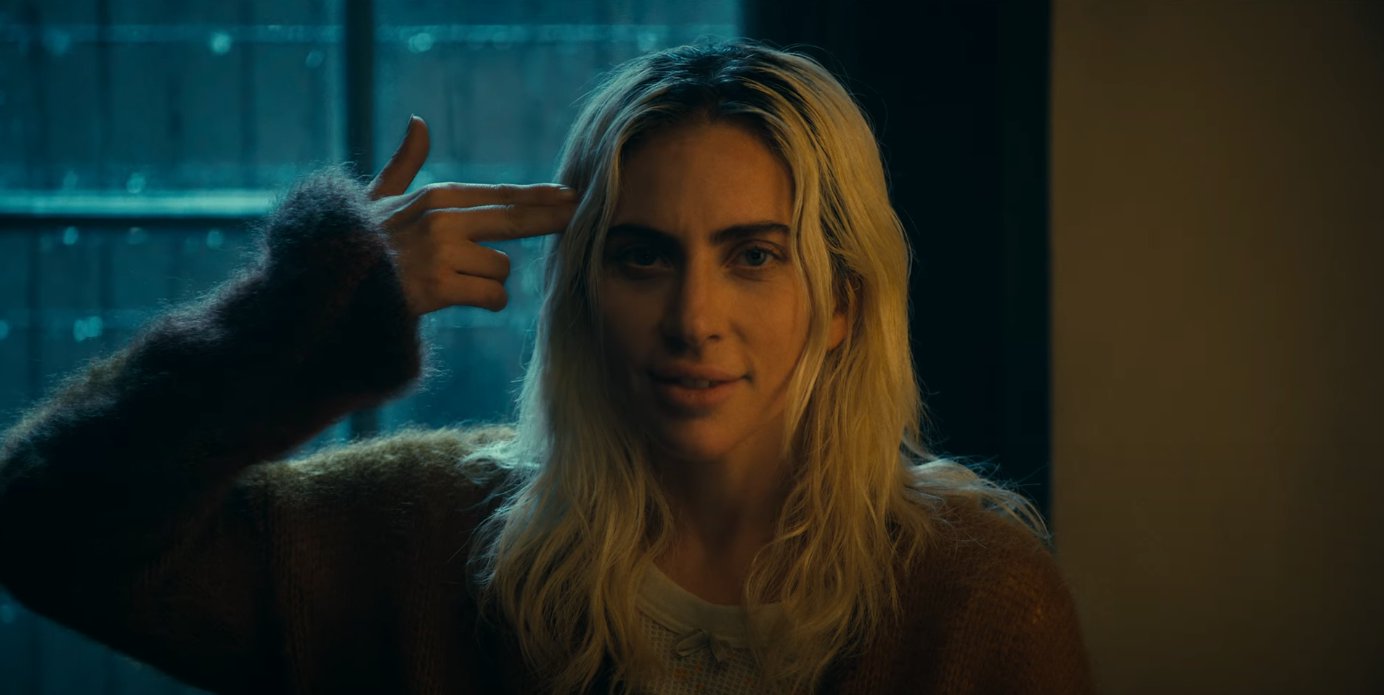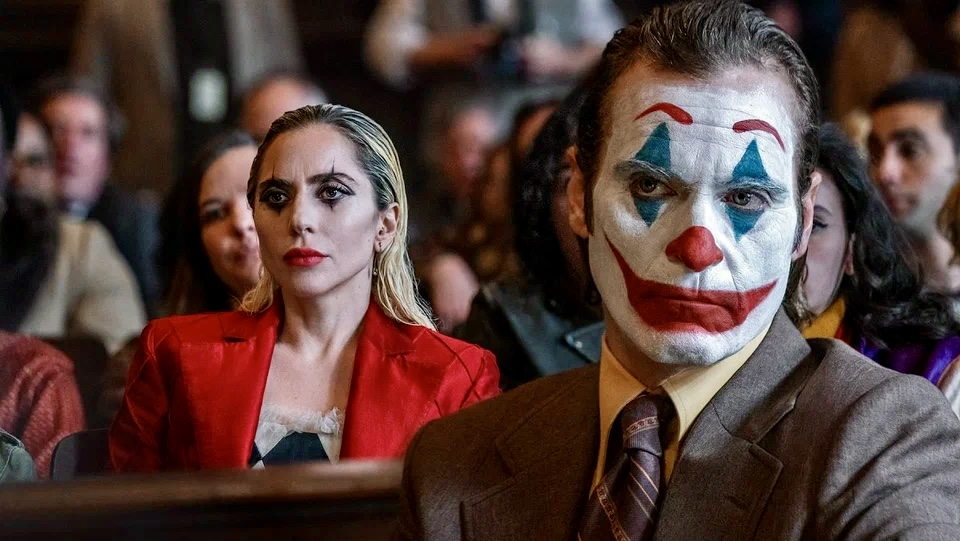Joker: Madness for Two premiered this week with Joaquin Phoenix and Lady Gaga. The scene promised the appearance of Harley Quinn, bright musical numbers and the continuation of the story of Arthur Fleck, which took off in 2019.
Let’s remember that the first part was presented in eleven Oscar nominations, including Best Picture and Best Director, and won two: Joaquin Phoenix won the Oscar in the Best Actor category, composer film Hildur Gudnaduttir received a statuette in the category “Best Music for a Film”.
But the highest sequel received devastating reviews and complete bewilderment from the viewer. At the time of writing reviews on Rotten Tomatoes, the film has a critic rating of 33%, and an even lower review rating of 31%.
What happened? We decided to figure it out, watched the new product and were horrified. It’s bad for everyone here. Everyone here has gone crazy, and this is not a metaphor.
Brief description
The writers have gone crazy. It’s sad
Musical instead of film. This is ill-conceived madness
Artistic madness instead of a film. it’s boring
There are bright moments here. But that’s not enough
We are not crazy enough to voice this
◦ Back to contents ◬
The writers have gone crazy. It’s sad

What is the film about?: The film takes place two years after the events of the first part. Arthur Fleck, known as the Joker, is now incarcerated in Arkham Asylum awaiting trial for the murder he will face at the end of the first game.
While Fleck is trying to figure himself out and preparing for the bean process, a new person appears in his life – Lee Quinzel, a patient at the hospital and his future lover.
The main problem with the script for “Joker: Madness for Two” lies in its chaos and lack of a coherent narrative. Where the first film was a deep exploration of identity and social injustice, the sequel is a collection of ideas that don’t add up to a coherent story.
Screenwriters Todd Phillips and Scott Silver, who deserved modernity for the script of the first film, clearly overestimated their strengths this time. They decided to simultaneously develop three key storylines: the romance between Arthur and Lee (Harley Quinn), the Joker’s personal trial, and musical numbers.
Each of these elements could have been their own movie, but trying to put them all together resulted in none of the storylines getting enough attention or impact. Any of the lines look unfinished.

The trial scenes take up most of the film, but do not add anything new to the Joker’s story. Viewers of this phenomenon watch as the events of the first part are discussed again in court, retelling the murder that the Joker has already committed. Instead of character development, the writers are busy with a theme that reflects on the success of the first film, but does not prepare anything new.
The writers tried to complicate Arthur’s character by introducing the theme of split personality, asking the question: is the Joker a separate entity or is it Arthur himself? However, this question does not receive a clear answer, and the character development turns out to be fragmented. Phillips and Silver are hesitant to follow through with their thoughts, and the split-personality storyline is left hanging in the air. Moreover, Lee’s (Harley Quinn) motivation for falling in love with Arthur seems completely far-fetched.
By the way, the key character Harley Quinn generally seems underdeveloped. Lady Gaga, who could have provided the film with vibrancy and vibrancy, appears as an outside observer. Her character simply exists to support Arthur, but her story or motivation remains an afterthought to the plot. Literally the character is a feature we think of as Christopher Nolan’s new film.
◦ Back to contents ◬
Musical instead of film. This is ill-conceived madness

After the incredible success of 2019’s first Joker, expectations for Todda Phillips were high. The director, inspired by the classic Martina Scorsese, managed to create a unique film that balanced between psychological drama and social criticism. But the sequel, Joker: Madness for Father, showed that this balance had been lost.
While the first film was sharply focused, rich in provocation and clear, concrete commentary, the second was caught in the trap of natural ambition and unwarranted experimentation. The decision to make Joker: Madness for Two a musical seems like provocation for provocation’s sake, but it turned out to be a poorly thought out decision.
The idea of making a musical as part of the Joker sequel sounded bold and unexpected, but in practice it failed. Phillips tried to use musical inserts to show the inner world of Arthur Fleck, but instead the film became as ethereal as possible. We didn’t ask for this.
Compared to classic musicals, where musical scenes accompany an organic part of the story, express the emotions of the characters or enhance the atmosphere, here the numbers are inserted meaninglessly and often for no apparent reason.
The musical scenes in the film feel like an interruption to the main plot – they don’t impact the characters or advance the story. Rather than conveying Arthur’s inner conflict or evoking his mental state with music, it exists on its own as a forced element unconnected to the film’s main drama.
Instead of creating something unique and reflective of Arthur’s madness, the director chose the path of least resistance, relying on well-worn and familiar tropes. For example, the music of Frank Sinatra was used. Where is something unique and original?
◦ Back to contents ◬
Artistic madness instead of a film. it’s boring

Almost the entire film takes place in two locations – within the walls of Arkham and in the courtroom. These confined spaces must be able to contain characters who are both physically and physically imprisoned. But Phillips failed to use this limitation correctly.
The film expands in scope and emotional intensity, becoming a monotonous spectacle. Instead of increasing the feeling of claustrophobia, the director stretches out the scenes, making them devoid of tension.
In the first film, every element – from the Joker’s dance to the threshold of his final monologue – was loaded with symbolism and depth. These scenes weren’t just gripping, they made you think about social issues and moral dilemmas. However, in the second film, Phillips triggers this moment. The visual style and directorial decisions are sporadic, random and lacking the meaning that was so important to the first film. Even if some shots look beautiful, they don’t drive the story and don’t have the emotional power that the original had.
The first film was much more intense and focused – it had a solid scene. Here, the film simply sticks to its pace, dwelling on empty and repetitive moments.
Todd Phillips had finally done something different and revolutionary in the musical genre by losing control of his film. The musical numbers have no meaning and often just distract from the main story.
In the first part of the film, Phillips asked viewers difficult questions about the nature of society and personality, about the role of man in a world that rejects him. In the sequel, all these philosophical reflections are visible only on the surface. The film is supposed to talk about the glory of nature, the influence of fanaticism, and the dual nature of the Joker, but all these themes turn out to be incomplete.
◦ Back to contents ◬
There are bright moments here. But that’s not enough

Despite all the flaws and chaos, the film also has its strengths. First of all, this is the acting, which, as in the first part, deserves praise. Joaquin Phoenix and Lady Gaga were able to inspire life in their characters, despite problems with the plot and direction.
Phoenix, as in the first part, has an amazing ability to fulfill its role. His portrayal of Arthur Fleck remains so convincing that, despite the chaotic script and strange directorial decisions, he holds the viewer’s attention. Phoenix is once again losing weight for the videos, and his “Glyph” transformation (like in the first film) is nothing short of respectable.
Although his character in this film is much more subdued and less dangerous than in the first Joker, Phoenix gradually pushes Arthur’s internal politics forward. This is especially noticeable on stage, where his harsh, raspy voice may not be musically perfect, but it brings a sense of emotion and instability to the film that is perfect for his character. True, you are unlikely to listen to these songs outside the film.
One of the main advantages of the film was Lady Gaga in the role of Leigh Quinzel, the future Harley Quinn. Despite the lack of character development in the scripts, Gaga completely immerses herself in her role. Gaga plays Lee as a complex, slightly unstable, yet suffering figure, incorporating the character’s vulnerability. When she sings or interacts with Phoenix, their on-screen chemistry works, despite the external filming of their relationship.
Film can reflect visual aesthetics. Cinematographer Lawrence Sher, who worked on the original Joker, once again finds his talent for creating a dark and oppressive atmosphere that supports the inner world of Arthur Fleck. Despite the limited space – the main action of the film takes place in Arkham and in the courtroom – the camera work is beyond praise. But this is not enough for a good film.
◦ Back to contents ◬
We are not crazy enough to voice this
Joker: Madness for Father is a film where everyone has gone crazy: the writers are confused by natural ideas, the director has lost control of the narrative, the actors are desperately trying to save the project, but cannot pull it out of chaos.
Lady Gaga and Joaquin Phoenix are as good as they can be, but even their talents can’t make up for the film’s failures. This is an example of how a successful original idea can be ruined by a sequel that tries to be everything but ends up being nothing.
Todd Phillips ended up doing something different and revolutionary in the musical genre, making something unrelated. This is no longer a psychological drama, but a pointless experiment that shows that sometimes trying to be revealed can lead to the complete destruction of an idea.
Better watch the first part.
Source: Iphones RU
I am a professional journalist and content creator with extensive experience writing for news websites. I currently work as an author at Gadget Onus, where I specialize in covering hot news topics. My written pieces have been published on some of the biggest media outlets around the world, including The Guardian and BBC News.











